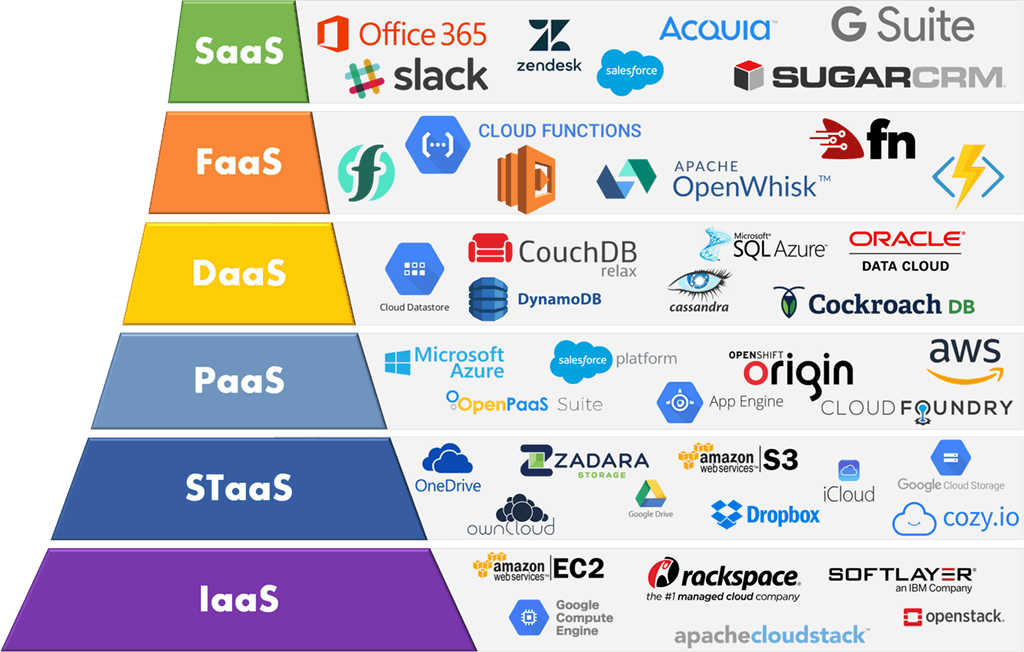Why Pick LinkDaddy Cloud Services: Advantages and Functions Discussed
Achieve Seamless Scalability With Cloud Provider
In the ever-evolving landscape of cloud services, achieving seamless scalability stands as a cornerstone for modern services looking for to stay competitive and versatile. The capacity to easily expand or get resources in action to changing needs is a pivotal advantage in today's busy electronic setting. By mastering the art of scalable cloud options, companies can not just enhance performance and improve procedures however also lead the way for future development and development. The pursuit for smooth scalability with cloud solutions unveils a globe of possibilities for those ready to accept the transformative power of dynamic source monitoring.
Benefits of Cloud Scalability
Cloud scalability provides organizations the flexibility to dynamically readjust resources based on need, ensuring optimum efficiency and price effectiveness. One crucial advantage is the capacity to range sources up or down swiftly in reaction to varying work. This dexterity makes it possible for organizations to satisfy changing consumer requirements without over-provisioning sources, eventually resulting in set you back financial savings. Scalability also boosts performance by making sure that systems can take care of boosted website traffic or workload without experiencing downtime or slowdowns. By effectively allocating resources, companies can preserve high levels of efficiency during peak times without unnecessary expenses throughout quieter durations. Furthermore, cloud scalability promotes innovation and trial and error by allowing services to quickly check originalities and scale them as required. This versatility encourages a society of continual enhancement and adaptation, enabling organizations to stay competitive in a rapidly advancing market landscape. Inevitably, the advantages of cloud scalability extend beyond price financial savings to encompass better efficiency, dexterity, and development.
Key Features for Scaling
Efficient scaling in cloud services counts on essential functions that enable companies to readjust resources dynamically based upon demand. One vital feature for scaling is elasticity, allowing resources to scale up or down in feedback to fluctuating work. This makes certain that companies can fulfill efficiency demands without over-provisioning resources. An additional key attribute is scalability, allowing systems to deal with enhanced work by including sources seamlessly. This function is crucial for suiting development without jeopardizing efficiency. In addition, automation plays a crucial function in scaling by automating the provisioning and de-provisioning of sources based on predefined plans. Automation decreases human treatment, improves performance, and ensures fast action to transforming demands. Tracking and analytics tools are additionally important for scaling, giving understandings into resource utilization, efficiency metrics, and possible bottlenecks. These devices allow organizations to enhance and make educated choices resource appropriation for effective scaling. Overall, these essential functions collectively encourage organizations to achieve seamless scalability in cloud solutions.
Carrying Out Auto-Scaling Methods
To successfully maximize source allowance and adapt to differing workloads, companies should tactically execute auto-scaling strategies in Get More Information their cloud solutions framework. Auto-scaling allows systems to immediately readjust the number of calculate resources based on real-time demand. There are different auto-scaling techniques that companies can employ, such as predictive scaling, which uses historic data to forecast future source needs, and responsive scaling, which reacts to existing work changes.

Finest Practices for Scalability
For organizations aiming to boost their scalability in cloud services, check that applying ideal practices is crucial for optimal performance and source management. One trick finest method is developing applications with a microservices architecture. This method breaks down applications right into smaller sized, independent solutions that can be released, upgraded, and scaled independently, enabling for greater versatility and scalability.
An additional vital method is utilizing containerization innovation, such as Docker or Kubernetes. Containers allow the product packaging of applications and their reliances into isolated units, making it simpler to scale components independently and deploy them regularly throughout various settings.
Furthermore, applying automated deployment and framework as code (IaC) can streamline scalability initiatives (linkdaddy cloud services). Automation tools like Terraform or Ansible assistance in provisioning and managing sources effectively, lowering hands-on mistakes and allowing quick scalability
Additionally, monitoring efficiency metrics, establishing alerts, and carrying out normal ability preparation are crucial practices to guarantee proactive scalability management. By sticking to these best methods, organizations can accomplish smooth scalability in their cloud services while maximizing performance and source utilization.
Tracking Performance Metrics
When analyzing the effectiveness of cloud services scalability, closely checking efficiency metrics is important for making certain optimum performance and source appropriation. By continuously tracking essential performance signs (KPIs) such as response times, latency, throughput, and source usage, organizations can obtain valuable understandings right into the health and wellness and effectiveness of their cloud framework. Checking efficiency metrics enables the very early discovery of potential traffic jams or issues that might influence scalability, making it learn the facts here now possible for aggressive actions to be required to address them before they rise.

Verdict
In conclusion, accomplishing smooth scalability with cloud solutions is necessary for companies to enhance efficiency, improve development, and maintain high efficiency degrees throughout peak times. By leveraging the benefits of cloud scalability, carrying out auto-scaling methods, utilizing essential features such as elasticity and automation, and adhering to finest techniques like application design and efficiency surveillance, services can effectively scale their systems while making best use of resource usage and efficiency.
The quest for seamless scalability with cloud solutions unveils a world of opportunities for those eager to accept the transformative power of dynamic source monitoring.
Cloud scalability uses companies the versatility to dynamically change sources based on need, ensuring optimum efficiency and expense effectiveness. Another vital function is scalability, making it possible for systems to deal with enhanced work by adding sources perfectly.For companies intending to boost their scalability in cloud services, executing ideal practices is essential for ideal performance and resource management.When assessing the efficiency of cloud services scalability, very closely keeping an eye on efficiency metrics is crucial for making certain optimum performance and source allotment.